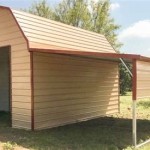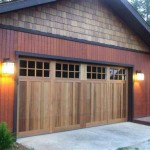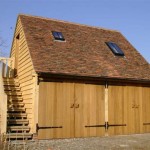Bringing The Batting Cage Into Your Garage
The allure of sharpening batting skills year-round, regardless of weather conditions, has fueled a growing trend: the installation of batting cages within residential garages. This transformation requires careful consideration of space, safety, and financial investment, but the potential benefits for aspiring athletes are considerable. This article explores the key aspects of bringing a batting cage into a garage, focusing on the factors that influence the decision-making process and the practical considerations involved in setting up a safe and effective practice environment.
The primary motivation for installing a batting cage in a garage is consistent access to batting practice. Outdoor facilities are subject to weather disruptions, and scheduled time at commercial batting cages may not always align with an athlete's availability. A home batting cage offers the freedom to practice at any time, fostering regular skill development and allowing for focused training sessions. This accessibility is particularly valuable for athletes in colder climates, where outdoor practice is limited during winter months.
Beyond convenience, a garage batting cage provides a controlled environment for focused training. Distractions are minimized, allowing the athlete to concentrate on technique and repetition. This controlled setting also allows for the use of various training aids, such as pitching machines, tees, and specialized targets, enhancing the effectiveness of each practice session. The ability to record and analyze swing mechanics in a private setting can further accelerate progress. The athlete can work on specific weaknesses without the pressure of performing in front of others, fostering a more relaxed and productive learning environment.
Assessing Space and Dimensions
The first and arguably most crucial step in bringing a batting cage into a garage is accurately assessing the available space. This involves measuring the length, width, and height of the garage interior. These measurements will dictate the maximum size of the batting cage and the type of cage that can be accommodated. A standard batting cage for baseball or softball typically requires a minimum length of 30 feet, a width of 12 feet, and a height of 10 feet. However, adjustments may be necessary based on the available garage dimensions. In some cases, a shorter or narrower cage may be required, which could impact the swing mechanics of the batter if not properly accounted for. Carefully consider the space required for the batter's stance, swing path, and the distance the ball will travel after contact.
Beyond the cage dimensions, consider the clearance around the cage. Sufficient space around the perimeter is essential for safety and maneuverability. This includes accounting for the space required to walk around the cage for maintenance, ball retrieval, and adjustments to training equipment. Low-hanging garage doors, protruding pipes, or electrical fixtures can pose hazards and must be addressed before installation. In some cases, modifications to the garage structure may be necessary to create a safe and functional batting cage environment. This might involve moving or padding obstructions, reinforcing walls, or adjusting lighting.
The height of the garage is a critical factor, especially for older homes with lower ceilings. Insufficient height can restrict the swing path and prevent the batter from fully extending during the swing. In such cases, consider a portable or retractable batting cage that can be easily stored when not in use. Alternatively, explore options for raising the garage ceiling or partially embedding the batting cage into the garage floor, although these solutions are more complex and costly. When evaluating space, account for the angle of the bat during the swing. The highest point of the swing will determine the minimum required ceiling height. It is always better to err on the side of caution and allow for more vertical space than seems necessary.
Selecting the Right Batting Cage and Equipment
Once the space has been assessed, the next step is selecting the appropriate batting cage and related equipment. Batting cages come in various sizes, materials, and configurations, each offering different levels of durability, portability, and protection. The choice will depend on factors such as budget, available space, and the frequency of use. Portable batting cages are a good option for garages with limited space or for those who want the flexibility to move the cage when not in use. These cages typically consist of a lightweight frame and netting that can be easily assembled and disassembled. Permanent batting cages are more durable and offer greater protection but require more space and effort to install.
The material of the batting cage netting is a critical consideration. Netting made of high-quality nylon or polyethylene is more resistant to impacts and UV degradation, ensuring a longer lifespan. The mesh size of the netting should be small enough to prevent baseballs or softballs from passing through. Consider the gauge or thickness of the netting, as a higher gauge indicates greater strength and durability. When selecting netting, ensure that it is rated for the intended use. Baseball netting must be able to withstand the force of batted baseballs, while softball netting can typically be lighter gauge. Regular inspection of the netting for tears or wear is essential to maintain safety.
In addition to the batting cage itself, other essential equipment includes a pitching machine, batting tee, and protective screens. A pitching machine can provide consistent and accurate pitches, allowing the batter to focus on swing mechanics and timing. Different pitching machines offer varying speeds, pitch types, and control options. A batting tee allows the batter to practice hitting stationary balls, focusing on specific aspects of the swing. Protective screens, such as L-screens or pitching screens, are essential for protecting the pitcher or coach during batting practice. These screens should be positioned strategically to deflect balls away from the pitcher or coach, minimizing the risk of injury. The quality of the equipment will influence the effectiveness and safety of the batting practice. Investing in durable and reliable equipment will provide a better training experience and reduce the likelihood of breakdowns.
Prioritizing Safety and Installation
Safety is paramount when installing a batting cage in a garage. Before beginning the installation process, carefully read and understand the manufacturer's instructions. Ensure that all necessary safety precautions are taken to prevent injuries. This includes wearing appropriate safety gear, such as gloves and eye protection, and working with a partner to lift and install heavy components. Double-check all connections and fasteners to ensure that the cage is securely assembled and anchored. A poorly installed batting cage can collapse during use, posing a significant safety hazard.
Consider the potential for impact damage to the garage walls and ceiling. Install padding or protective barriers to cushion any stray balls. Foam padding, rubber mats, or even old mattresses can be used to line the walls and ceiling around the batting cage. Pay particular attention to areas that are likely to be hit by errant balls, such as corners and edges. Impact-resistant drywall or plywood can also be used to reinforce walls in high-impact areas. Regularly inspect the padding and barriers for wear and tear and replace them as needed.
Adequate lighting is crucial for safety and visibility within the batting cage. Ensure that the garage is well-lit, with sufficient light to clearly see the ball and the surrounding area. Consider installing additional lighting fixtures, such as spotlights or LED strips, to improve visibility. Position the lighting fixtures to minimize shadows and glare. Poor lighting can increase the risk of misjudging the ball's trajectory and result in injuries. Implement a clear set of safety rules for using the batting cage. This includes wearing helmets and protective gear, limiting the number of people inside the cage at one time, and designating a safe zone for spectators. Regularly review the safety rules with all users and enforce them consistently. Adhering to strict safety protocols will minimize the risk of accidents and create a safe and enjoyable training environment.

Tips For Planning Your Perfect Batting Cage Carport Central

Tips For Planning Your Perfect Batting Cage Carport Central

Your Sport Winter Refuge For Baseball Softball

Tips For Planning Your Perfect Batting Cage Carport Central

Retractable Batting Cages By Victory Athletics Inc

17x63x14 Metal Batting Cage

Designing Your Indoor Batting Cage With A Metal Building Msb

Batting Cages With Some Dave And Busters Kleschka Vlogs

Commercial Style Batting Cage Package Deal Cages Inc

Indoor Batting Cages Turf Impressions Utah
Related Posts








